Uncovering Trending Topics in Customer Reviews

Customers’ needs and preferences must be at the heart of any product, service or experience a brand creates. No one’s going to buy something that doesn’t serve their needs.
But creating products and experiences that consumers love isn’t a one-time event. Why? Because consumers’ needs, preferences and expectations are constantly in flux. Brands and retailers must evolve their offerings to keep up with these evolving needs – or risk losing shoppers. Consider companies like Blockbuster, Kodak and Blackberry, which were once hugely successful – but failed to evolve to meet the changing needs of shoppers.
But how exactly can brands keep a pulse on the ever-changing preferences of their shoppers in order to optimize their products and experiences? By soliciting feedback from shoppers, looking for trends in that feedback, and taking appropriate action.
These days, consumers share their feedback through myriad channels, including surveys, focus groups, social media, phone calls, and even the good, old-fashioned suggestion box (among others). However, a growing number of consumers are opting to share their feedback (both positive and negative) by writing reviews. Our own research found that 74% of consumers are at least somewhat likely to write a review after having a negative experience. That figure is 77% among consumers who have had a positive experience.
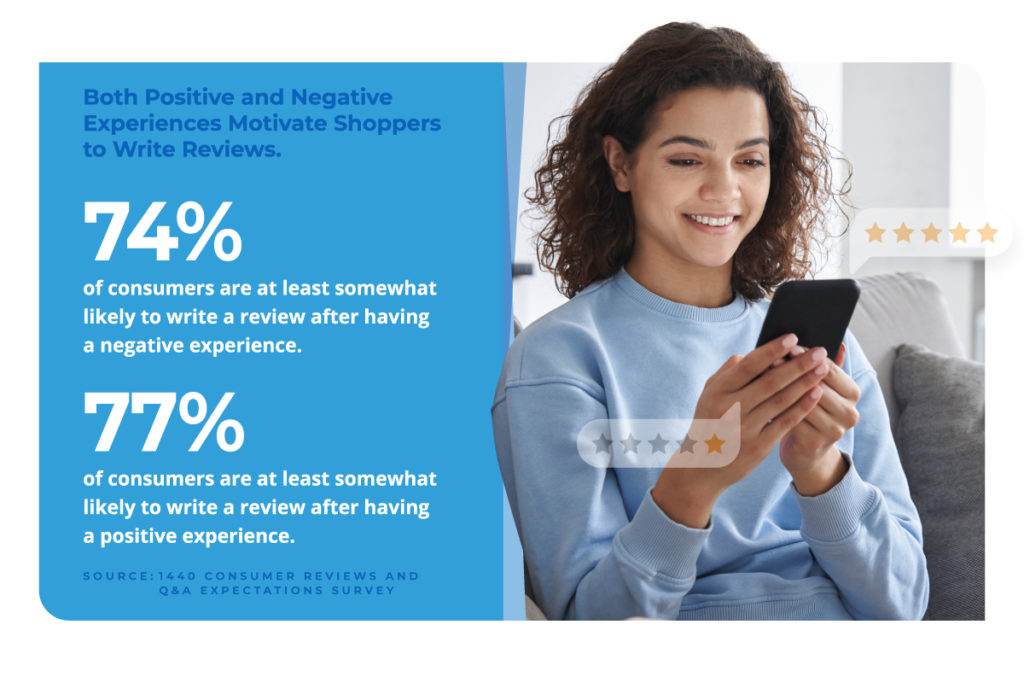
Brands that regularly tap into ratings and reviews can uncover trends in feedback. Then, they can use these insights to improve products and experiences – and boost customer satisfaction and sales.
Reviews Can Fuel Product Improvements
Your brand works hard to build winning products your customers love. The trends you uncover in reviews can help you iterate on products to ensure they continue to meet shoppers’ needs.
It starts with measuring sentiment at the product level. The average star rating can give you some insights – but it doesn’t always tell the whole story. With the right data, you can better understand how customers feel about each of your product offerings.
Then, you can dig deeper to identify the trends behind this sentiment. In other words, you can identify exactly what it is customers love (and don’t love) about each product.
Armed with these insights, you can:
1. Fix a Flaw
Maybe shoppers love a particular product, but there’s a design flaw in the packaging. With reviews, brands can identify the negative sentiment about the packaging – and then work to improve it.

2. Rework a Formula
You may have products with largely positive overall sentiment. However, there are certain elements with negative sentiment. For example, a beauty brand might sell a moisturizer that has a high average star rating. But there’s negative sentiment regarding smell. This might be an opportunity for the brand to rework the formula to preserve the features shoppers love while improving the smell.

3. Add or Remove a Feature
Reviews can uncover ideas for adding (or eliminating) a feature to improve a product (and your customers’ satisfaction). For example, this kitchen brand might notice negative sentiment for one of their lunchboxes, with several reviews complaining that the product doesn’t have room for an ice pack. They may use these insights to rework the lunchbox – and include room for an ice pack in the next iteration.

4. Create a Completely New Product
Regularly monitoring reviews for trends can help you identify ideas for brand new products. For example, a CPG brand might notice that there’s some negative sentiment around taste for one of their protein bars. When they dig in, they see that a good portion of shoppers feel that the product is too sweet – with too much sugar. So, the brand decides to create a lower sugar version of the bar to appeal to those looking to cut down on sugar.
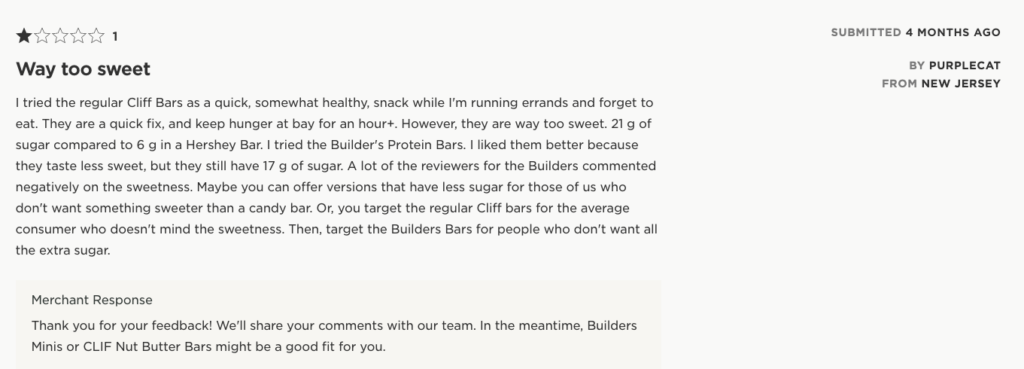
5. Eliminate a Product Altogether
There’s no doubt you invest time and resources into developing new products. But the reality is, not all of them will resonate.
While some can be fixed or altered, there are also times when the best approach is to eliminate a product altogether. For example, one of your products might have largely negative sentiment around many different aspects of the item. If you keep selling it, you’ll keep getting negative reviews. And those negative reviews will negatively impact your online reputation.

By eliminating a problem product, you can focus more time and resources on developing (and iterating on) great products and experiences your customers will love.
Reviews Can Uncover Opportunities to Improve Customer Experiences
Creating great products is important. But these days, brands must also make it a priority to deliver great experiences throughout the customer journey, too. According to new Salesforce research, 88% of consumers say the experience a company provides is just as important as its products or services. This is up from 80% just two years ago.
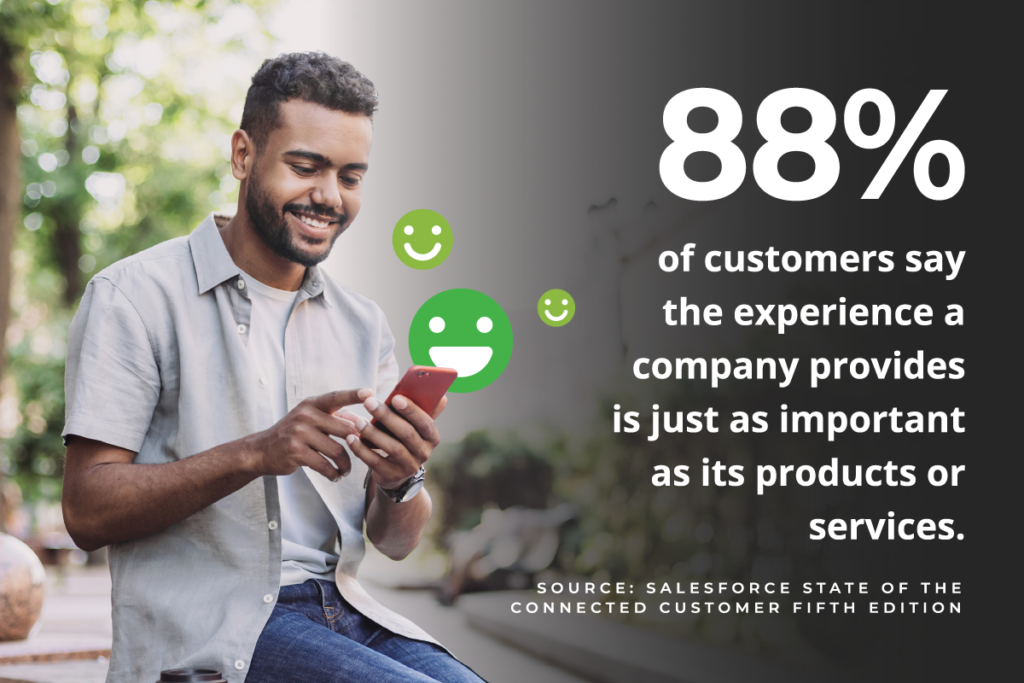
Consumers often share their feedback about their experiences with a brand by writing reviews. Brands can identify trends in this feedback that they can use to optimize their customers’ experiences.
For example, location reviews can help brands identify insights that can help them improve shoppers’ experiences in their brick-and-mortar locations.

Brands can look for trends in app reviews to determine ways to improve customers’ experiences on their mobile app.
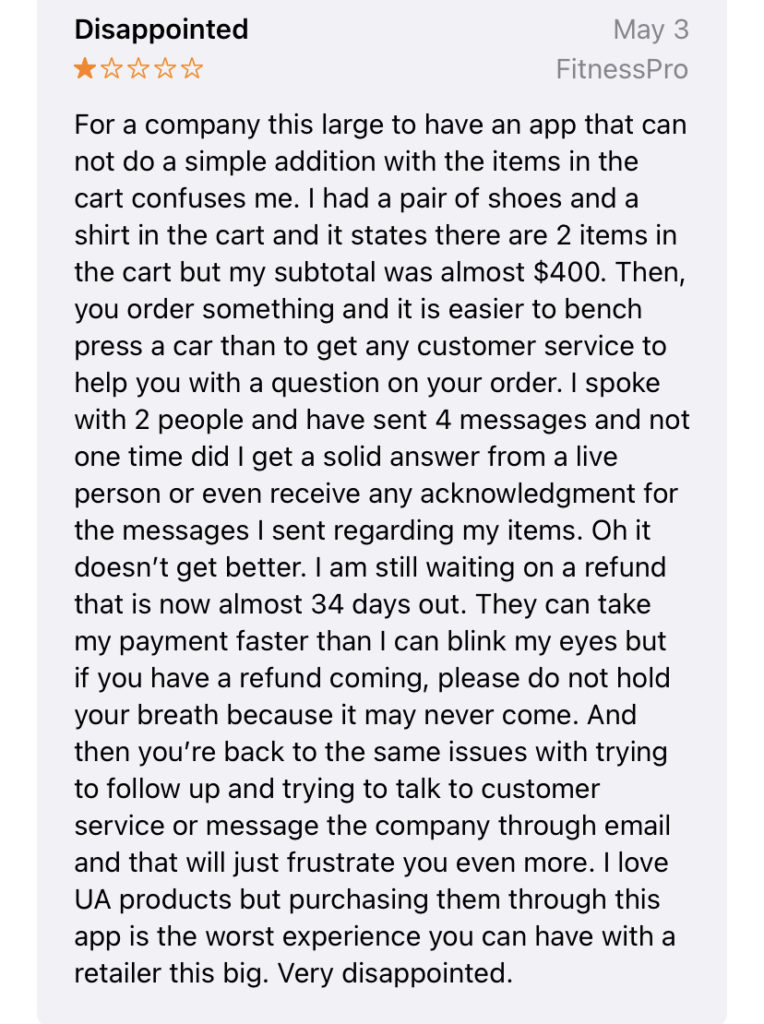
Company reviews also include plenty of insight for improving customers’ experiences throughout the purchase journey.

Even product reviews frequently include feedback related to experiences – such as store, website, or shipping experiences. When brands identify trends, they can make impactful improvements.

How to Uncover Trends in Reviews
When consumers share their feedback by submitting reviews, they expect brands to take action on their feedback. Our research found that 77% of consumers say that if they left a product review with feedback about a problem or flaw, they’d expect the manufacturer to fix the problem. And 79% of consumers would expect a manufacturer to fix a product description if they left a review indicating the description was inaccurate.
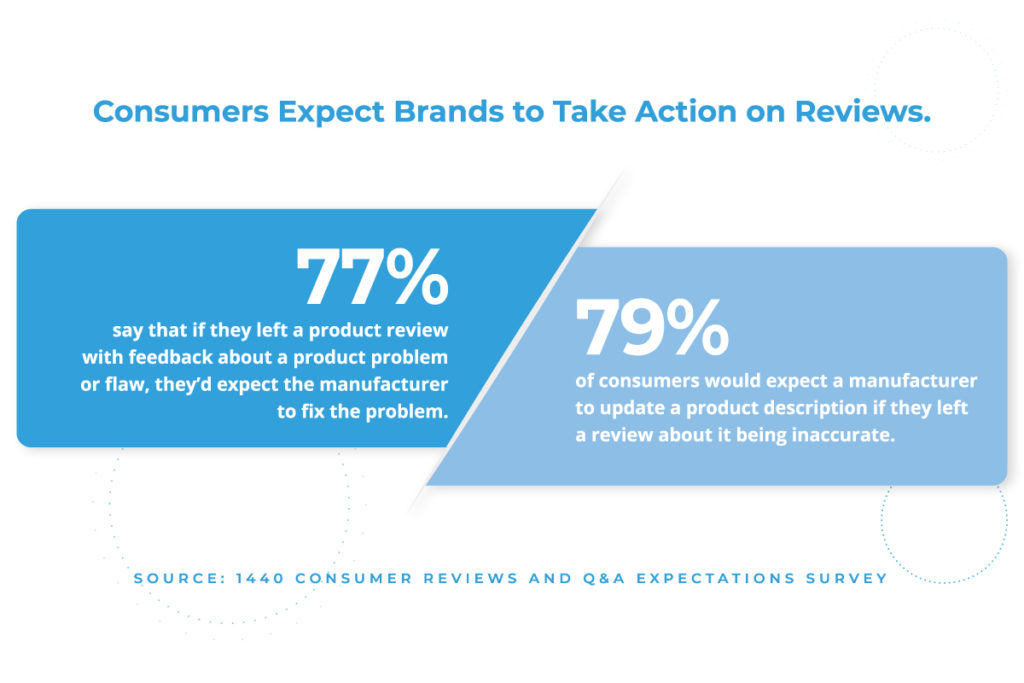
What’s more, monitoring reviews, looking for trends, and then taking action on them is an important way to ensure your products and experiences continue to meet shoppers’ needs and expectations. Otherwise, your customers won’t hesitate to switch to another brand. Salesforce research found that a staggering 71% of consumers have switched brands at least once in the past year.
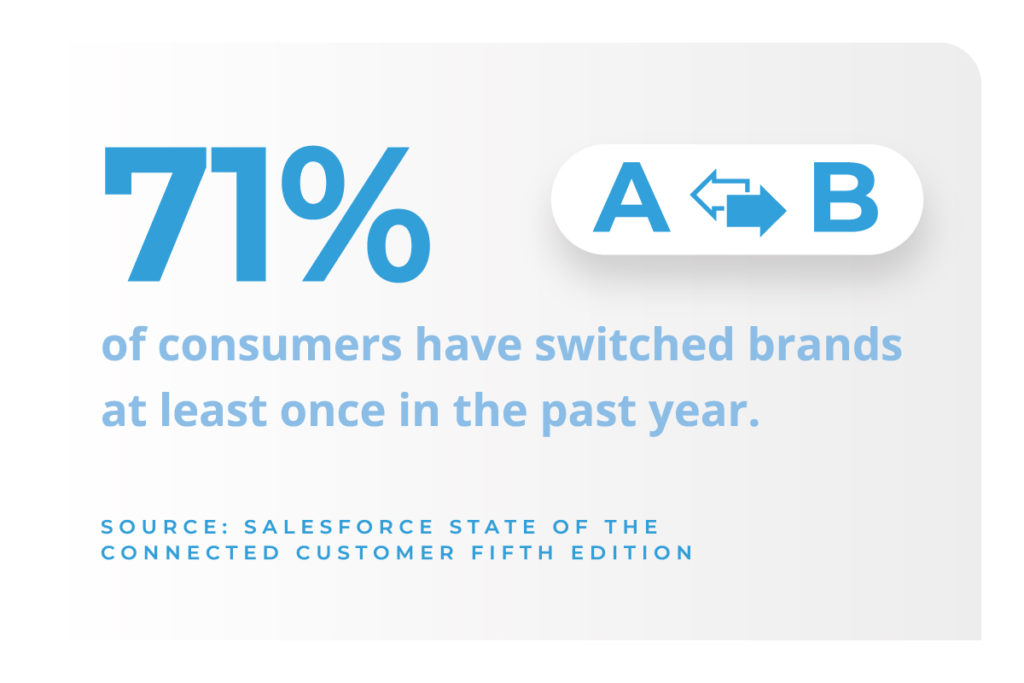
But how can you start identifying trends in your reviews so you can take action on them?
Oftentimes, it’s easier said than done.
If you’re like most brands, you have reviews flowing in from myriad sources, including your ecommerce site, retail partners, global marketplaces, Google, Trustpilot and others. But if you manage each channel separately the data is siloed. Sure, you can understand sentiment and trends on a channel-by-channel basis. But it’s nearly impossible to get a holistic view across all channels.
What’s more, if you’re a global brand, you’re likely getting feedback in multiple languages, with no easy way to translate and analyze it. In fact, this might be the case even if you aren’t operating globally, as 22% of the total US population speaks a language other than English at home.
So the bottom line is, you’re sitting on a ton of good data – but have no way to translate and holistically analyze and take action.
The best brands are overcoming these challenges and unlocking insights with 1440’s suite of solutions.
With Reputation Studio from 1440, brands can consolidate all reviews from all sources into a single login: Salesforce. And because all reviews are managed in a single platform, it’s easy to gain a holistic look at sentiment on the brand and product level, which can shed light on trends. Brands can also leverage keyword tagging to identify trends.
And Translation Studio from 1440 empowers brands to easily and accurately translate just about anything in Salesforce – including reviews. That means you can more easily tap into the insights from your global reviews, regardless of the language they were written in.
Once the brand has identified trends, they can dig deeper to determine where to take action. For example, a brand might notice negative sentiment about the flavor of the granola bar. They dig in further to see that many reviews mention the bar being too dry. The brand uses these insights to rework the formula of the product.
Making data-driven product and experience optimizations (fueled by insights from reviews) will help you improve customer satisfaction – and your reputation. Current customers will turn into repeat customers – increasing lifetime value. And, these happy customers will write positive reviews, which will improve your reputation and make it easier to attract future, prospective shoppers.
Unlock Insights from Your Reviews to Boost Your Bottom Line
Consumers’ needs and preferences are constantly evolving. Brands must evolve their products and experiences to keep up.
The first step is to keep a constant pulse on how customers feel about your products and experiences. A great way to do that is to monitor reviews for feedback, identify trends, and then take action to improve products and experiences.
Ready to see how Reputation Studio from 1440 can help you consolidate all reviews and make it easy to identify actionable insights? Contact us to schedule a live demo.